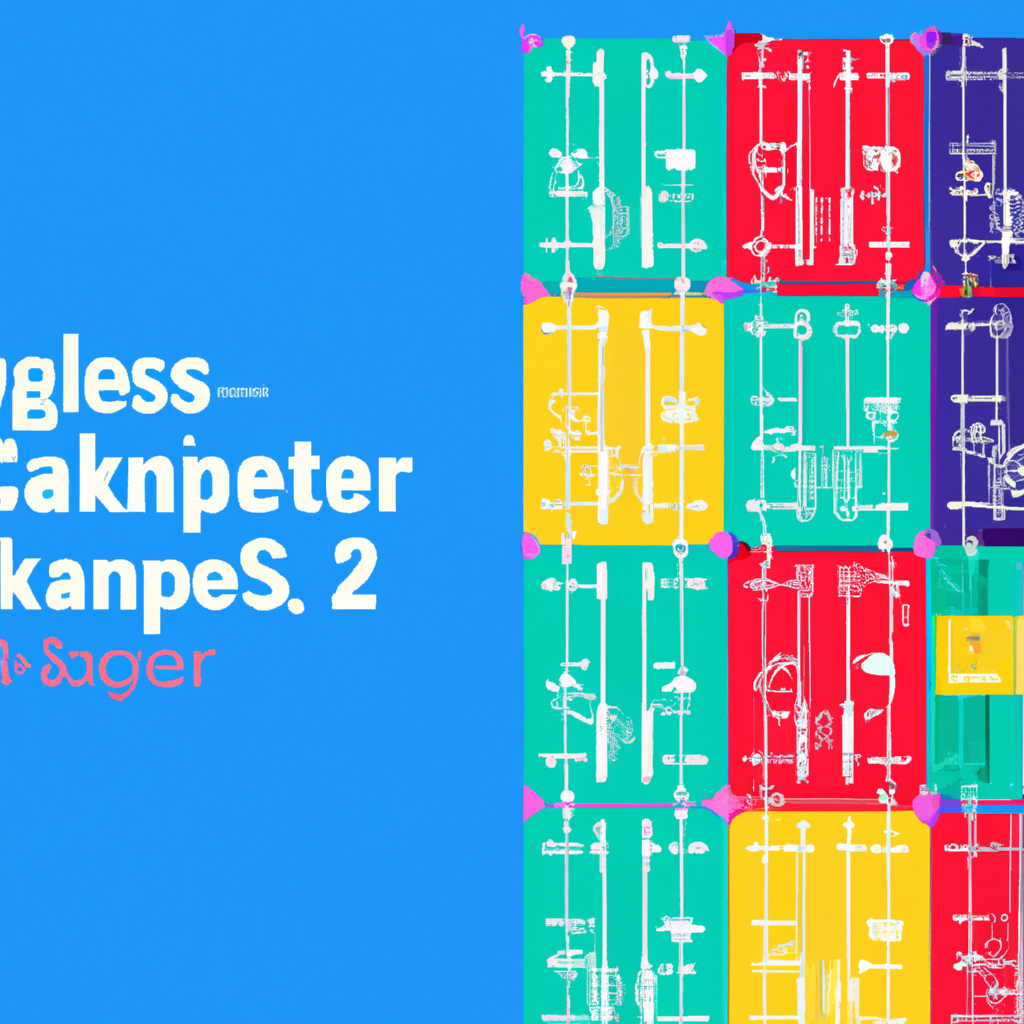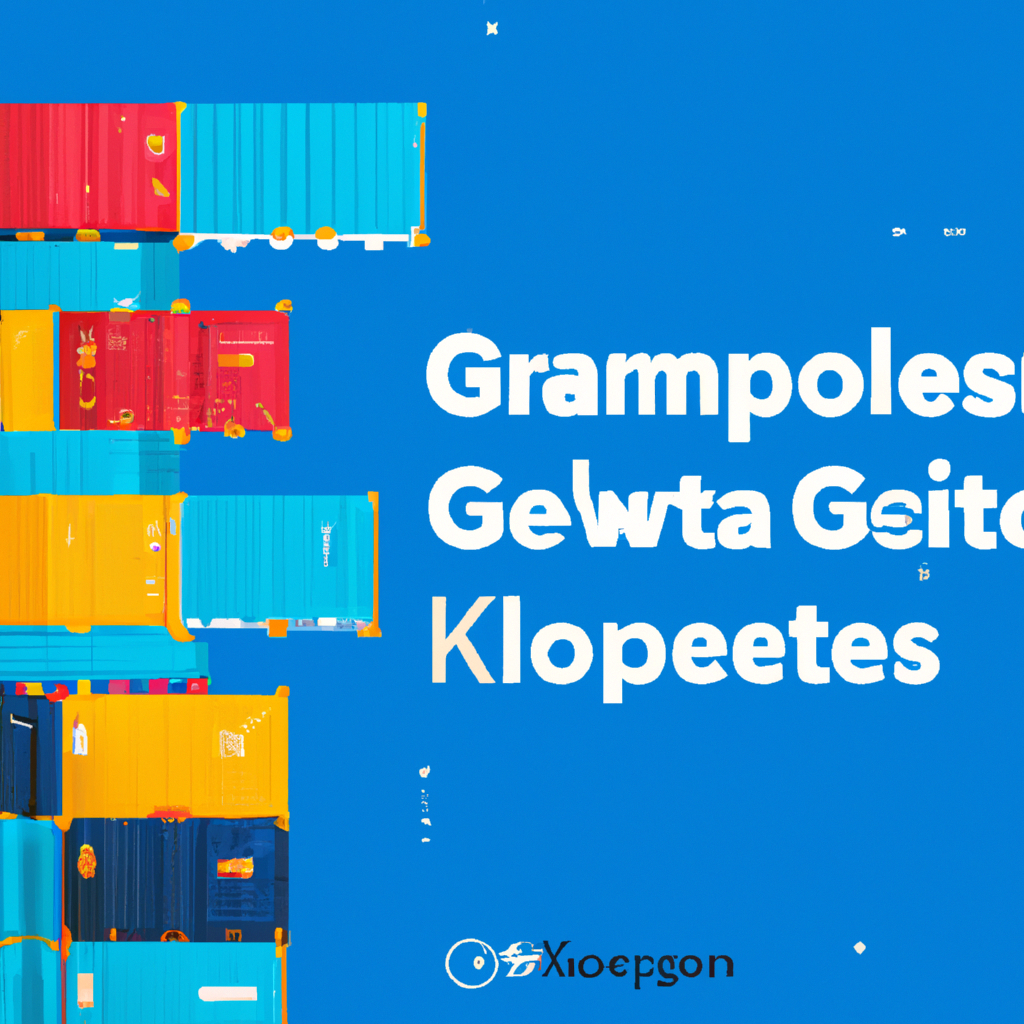If you’re looking to scale your containers on GCP Kubernetes, we’ve got you covered with the best practices to ensure a smooth and efficient process. Scaling containers can be a complex task, but by following these guidelines, you’ll be able to maximize the potential of your infrastructure and handle increasing workloads with ease. From managing resources effectively to utilizing auto-scaling features, this article will provide you with the essential tips and tricks for scaling containers on GCP Kubernetes.

Horizontal Pod Autoscaling
Horizontal Pod Autoscaling (HPA) is a powerful feature of Kubernetes that automatically scales the number of pods in a deployment based on the observed CPU utilization or custom metrics. By enabling HPA, we allow Kubernetes to automatically manage the number of running pods to match the current workload. This ensures that our applications can handle varying levels of traffic and demand.
To enable HPA in our Kubernetes cluster, we need to add the necessary configuration to our deployment manifest. Specifically, we need to include the autoscaling/v2beta2 API version and define the HorizontalPodAutoscaler resource. Within this resource, we can specify the minimum and maximum number of pods we want to maintain, as well as the target CPU utilization or custom metrics that should trigger scaling.
Once HPA is enabled, Kubernetes will continuously monitor the CPU utilization or custom metrics of our pods. If the observed metrics exceed or fall below the defined thresholds, Kubernetes will automatically adjust the number of pods in our deployment, either scaling up or down as needed. This dynamic scaling ensures that our applications are always running with the right amount of resources to handle the workload efficiently.
Tuning HPA settings based on workload characteristics is essential to ensure optimal scaling behavior. We need to carefully define the target CPU utilization or custom metrics thresholds to avoid unnecessary scaling events or potential resource shortages. Additionally, monitoring the performance of our applications and the behavior of the HPA can help us identify any tuning or adjustment needs and make informed decisions to optimize our scaling setup.
Vertical Pod Autoscaling
While Horizontal Pod Autoscaling focuses on scaling the number of pods in a deployment, Vertical Pod Autoscaling (VPA) tackles scaling at the individual pod level. VPA ensures that pods are allocated and configured with the optimal amount of CPU and memory resources based on their actual utilization.
To enable VPA in our Kubernetes cluster, we need to deploy the Vertical Pod Autoscaler controller and configure it to monitor our pods. VPA continuously monitors the resource utilization of each pod and adjusts their resource requests and limits accordingly. By dynamically allocating the right amount of resources to each pod, VPA prevents over-provisioning and resource wastage, while also avoiding resource shortages and contention.
One useful feature of VPA is the VPA Recommender, which analyzes historical resource utilization patterns and suggests appropriate resource requests and limits for pods. By leveraging the VPA Recommender, we can automate the process of setting the right resource allocations for our pods, improving efficiency and reducing manual configuration efforts.
However, it’s important to monitor and adjust VPA recommendations regularly. While VPA simplifies the process of resource allocation, it’s always necessary to ensure that the recommended resource requests and limits align with the requirements of our applications. Regular monitoring of VPA recommendations and their impact on pod performance can help us fine-tune and optimize our resource allocation strategy.

Cluster Autoscaling
Cluster Autoscaling provides a solution for managing the size of our Kubernetes cluster based on the demand and workload requirements. By enabling Cluster Autoscaling, we allow Kubernetes to automatically add or remove nodes from our cluster to meet the resource demands of our applications.
To enable Cluster Autoscaling, we need to configure and deploy the Cluster Autoscaler in our Kubernetes cluster. This component monitors the resource utilization of our nodes and makes decisions about scaling based on predefined rules and thresholds.
Configuring the minimum and maximum node counts is crucial for achieving the correct balancing of resources. We need to define the minimum number of nodes required to meet the baseline workload demands, ensuring that our applications have enough resources to run efficiently. Additionally, setting the maximum number of nodes prevents the cluster from scaling up indefinitely and incurring unnecessary costs.
Consider using a mix of preemptible and regular nodes when configuring Cluster Autoscaling. Preemptible nodes offer lower costs but can be evicted at any time, while regular nodes provide more stability but at a higher cost. By combining both types of nodes, we can achieve a balance between cost-efficiency and reliability.
Regular monitoring of the cluster and its resource utilization is essential to ensure that Cluster Autoscaling is working as expected. Keeping an eye on the cluster’s scaling behavior and making adjustments to its configuration when necessary will help maintain a healthy and optimized cluster.
Node Affinity and Anti-affinity
Node Affinity and Anti-affinity allow us to influence the placement of pods on specific nodes in our Kubernetes cluster. By using node affinity and anti-affinity rules, we can ensure that pods are scheduled on nodes that meet certain requirements or avoid nodes that have specific characteristics.
To leverage node affinity and anti-affinity, we need to define the appropriate rules in our pod’s configuration. Node selectors are used to identify the nodes that match certain labels, and these labels can be assigned to both pods and nodes. By using node selectors, we gain fine-grained control over pod placement.
In some cases, we may want to prevent pod placement on specific nodes. Taints and tolerations can be used for this purpose. Taints are applied to nodes and indicate their undesirability for certain types of pods. On the other hand, tolerations are set in the pod’s configuration and allow the pod to tolerate nodes with specific taints.
By leveraging node affinity and anti-affinity, as well as node selectors and taints/tolerations, we can ensure that our pods are distributed across the cluster in a manner that optimizes resource utilization and meets our specific requirements.

Pod Disruption Budgets
Pod Disruption Budgets (PDBs) help ensure the availability and stability of our critical workloads during cluster-wide events, such as node maintenance or failure. PDBs define the minimum number of pods that should be available for each deployment, guaranteeing a certain level of availability during disruptive events.
Defining PDBs is crucial for critical workloads that require high availability. By setting appropriate budget values, we can ensure that an adequate number of pods are always available to handle the workload, even during cluster disruptions. The budget values can be determined based on the availability requirements of our applications.
Monitoring PDB violations is essential to ensure that the defined budget values are met. If a PDB violation occurs, it means that the availability requirements are not being met. This can happen due to a variety of reasons, such as misconfigured PDBs or resource constraints. Regularly monitoring PDB violations allows us to identify and address any issues promptly, ensuring the availability and stability of our critical workloads.
Resource Quotas
Resource quotas provide a mechanism for limiting the amount of compute resources that can be consumed by namespaces in our Kubernetes cluster. By setting resource quotas, we can prevent individual projects or teams from overusing cluster resources and causing resource contention or depletion.
To set resource quotas, we need to define the appropriate limits in our Kubernetes cluster configuration. These limits can be based on CPU, memory, and storage resources. By defining appropriate values for resource quotas, we can ensure that each namespace has a fair share of resources to support its workloads.
Regular monitoring of resource consumption and adjustment of quotas is essential to prevent resource contention and ensure fair sharing of resources. By keeping an eye on resource utilization and adjusting quotas as needed, we can maintain a well-balanced and efficient cluster.

StatefulSets
StatefulSets are useful for managing stateful workloads in Kubernetes. Unlike Deployments, which are focused on stateless applications, StatefulSets provide guarantees about the order and uniqueness of pod creation and deletion, making them suitable for applications that require stable network identities or persistent storage.
When considering StatefulSets for stateful workloads, we need to ensure proper scaling. StatefulSets have unique scaling characteristics due to their requirements for stable network identities and persistent storage. Scaling StatefulSets involves adding or removing pods while maintaining the desired state, such as the ordering of pod creation.
Monitoring the performance of StatefulSets is important to identify any performance or stability issues. By analyzing metrics related to the StatefulSet’s pods, we can detect any anomalies or bottlenecks and make appropriate adjustments. Fine-tuning the StatefulSet configuration, such as adjusting resource requests and limits, can help optimize performance and ensure the stability of our stateful workloads.
Pod Affinity and Anti-affinity
Pod Affinity and Anti-affinity allow us to influence the co-location of pods in our Kubernetes cluster. By defining affinity and anti-affinity rules, we can ensure that pods are scheduled on nodes that meet certain requirements or avoid nodes that already have specific pods running.
To use pod affinity and anti-affinity, we need to configure the appropriate rules in our deployment manifest. Label selectors are used to identify pods that share certain labels, and these labels can be assigned to both pods and nodes. By utilizing label selectors, we gain fine-grained control over pod co-location.
In some cases, we may want to ensure that pods are distributed across different failure domains within our cluster. Topology spread constraints can be used for this purpose. By defining topology spread constraints, we ensure that pods are evenly distributed across different zones or regions, improving fault tolerance and availability.
By leveraging pod affinity and anti-affinity, label selectors, and topology spread constraints, we can optimize workload distribution in our cluster and prevent resource overutilization or hotspots.

Pod Priority and Preemption
Pod Priority and Preemption allow us to prioritize critical workloads in our Kubernetes cluster and efficiently utilize cluster resources. By assigning priority classes to our pods and enabling preemption, we can ensure that high-priority pods receive the necessary resources while reclaiming resources from low-priority pods when needed.
Defining pod priority classes is crucial for prioritizing critical workloads. By assigning higher priorities to pods that require immediate processing or resources, we ensure that these crucial tasks are given precedence over lower-priority pods. This helps maintain the performance and stability of our critical applications.
Preemption allows Kubernetes to reclaim resources from low-priority pods when higher-priority pods require them. By enabling preemption, we can efficiently utilize our cluster resources and ensure that high-priority workloads receive the necessary resources. However, it’s important to monitor preemption events and adjust priorities if necessary to prevent any unintended impact on the availability or performance of our applications.
Regular monitoring of preemption events and adjusting priorities based on the observed behavior of our workloads is crucial to maintaining a well-balanced and efficient cluster.
Pod Scheduling
Pod Scheduling is a critical aspect of managing our Kubernetes cluster efficiently. By considering pod priority and preemption, resource requests and limits, and pod tolerations, we can improve the scheduling efficiency and allocate resources properly.
Pod priority and preemption can significantly impact the scheduling behavior of our cluster. By assigning appropriate priorities to our pods, we can ensure that high-priority workloads are scheduled promptly and receive the necessary resources. Additionally, enabling preemption allows Kubernetes to reclaim resources from low-priority pods and allocate them to higher-priority ones.
Setting resource requests and limits accurately is essential for proper resource allocation. Resource requests define the minimum amount of resources required for a pod, while limits define the maximum amount of resources that a pod can consume. By specifying these values correctly, we help Kubernetes make optimal scheduling decisions.
To ensure better placement options for our pods, we can configure pod tolerations. Pod tolerations allow pods to tolerate certain conditions or taints applied to nodes. By utilizing pod tolerations, we can ensure that our pods are scheduled on nodes that may have specific requirements or characteristics.
By considering pod priority and preemption, resource requests and limits, and pod tolerations when configuring pod scheduling, we can achieve better resource allocation and scheduling efficiency. Regular monitoring and adjustment of these settings will enable us to maintain a healthy and optimized cluster.
